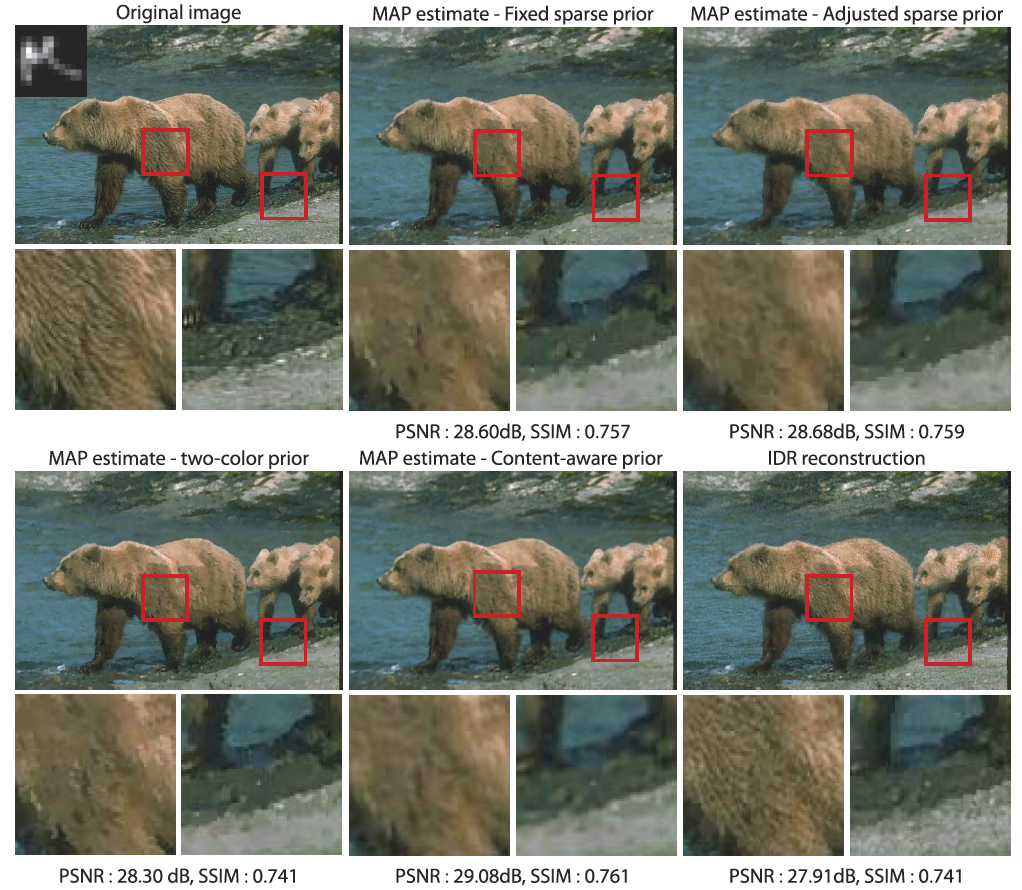
IEEE Transactions on Pattern Analysis and Machine Intelligence
1 Massachusetts Institute of Technology
2 Microsoft Research

![]()
The restoration of a blurry or noisy image is commonly performed with a MAP estimator, which maximizes a posterior probability to reconstruct a clean image from a degraded image. A MAP estimator, when used with a sparse gradient image prior, reconstructs piecewise smooth images and typically removes textures that are important for visual realism. We present an alternative deconvolution method called iterative distribution reweighting (IDR) which imposes a global constraint on gradients so that a reconstructed image should have a gradient distribution similar to a reference distribution. In natural images, a reference distribution not only varies from one image to another, but also within an image depending on texture. We estimate a reference distribution directly from an input image for each texture segment. Our algorithm is able to restore rich mid-frequency textures. A large-scale user study supports the conclusion that our algorithm improves the visual realism of reconstructed images compared to those of MAP estimators.
![]()
![]()
This work was mostly done while the first author was an intern at MSR. This research is partially funded by NGA NEGI-1582-04-0004, by ONR-MURI Grant N00014-06-1-0734, and by gift from Microsoft, Google, Adobe. The first author is partially supported by Samsung Scholarship Foundation.
![]()